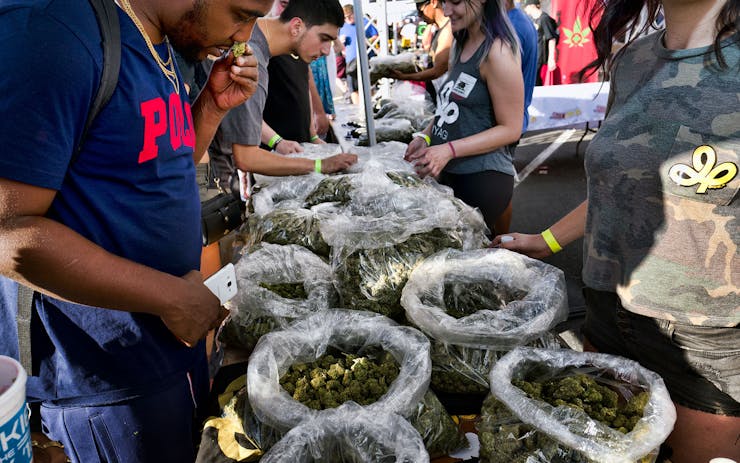California consumers may get seamless legal access to cannabis statewide instead of a patchwork of local delivery bans, under rules set to be made final this fall.
State officials on Friday presented a final draft of permanent rules governing the cannabis industry. The most controversial element: a rule continuing to allow legal cannabis deliveries in cities that ban retail sales.
The Bureau of Cannabis Control, the state Department of Food and Agriculture, and the state Department of Public Health issued the revised rules Friday. They will have wide-ranging effects on issues including packaging, events, testing, and more. The public has 15 days to weigh in with comments before they are finalized in December.
The delivery rule draws praise from consumers and the industry, but a judge may make the final decision.
While many in the cannabis industry have applauded the delivery rule, plenty still complain about the permanent rules overall. The hundreds of pages of regulations confuse operators and sometime conflict with other rules. The rules add to the regulatory burden on cannabis businesses, a cost that many businesses pass down to consumers. Industry insiders are still going through the hundreds of pages of rules trying to digest them.
There are “so many regulations in there that are just oppressive and difficult,” Debby Goldsberry, executive director of the cannabis shop Magnolia Oakland wrote on her Facebook page. “It’s confusing, overcomplicated, overbearing, and ultimately unenforceable.”
In general, though, it’s new cannabis business that will be affected more than existing ones, according to Hezekiah Allen, former executive director of the California Growers Association. “For businesses that have not yet been able to obtain a license,” he said, “the target seems to be getting further away, and the prospects for success more elusive. This is problematic, as a vast majority of businesses in the state have not yet been licensed.”
Delivery Destined for Legal Debate
The delivery rule draws praise from consumers and the industry, but state courts could make the final decision. Police and cities have said they may sue state agencies to delete legal delivery access for consumers. In the meantime, though, Allen says the Bureau of Cannabis Control “has taken a strong stand for access, which is much needed as patients have been hurt by limited access and consumers turn to unregulated sales when left with no other option.”
Even though 57% of California voters enacted legalization in 2016, just 25% of cities and counties allow cannabis retail. Most cities and counties lack the regulatory experience or willpower to do so.
Shop highly rated dispensaries near you
Showing you dispensaries nearThe League of California Cities and the California Police Chiefs Association strongly oppose allowing licensed delivery rules. They say cities banned retail sales because of safety concerns and allowing legal deliveries in those communities would undercut home rule. State law disallows local governments from banning deliveries, however, and the rules reflect that reality.
In issuing the rules, the BCC “decided to ignore the concerns of a broad coalition of local government, labor, and law enforcement,” Carolyn Coleman, the League of Cities’ executive director, said in a statement.”By removing local governments’ reasonable regulatory authority on cannabis deliveries, the BCC is imposing a ‘one size fits all’ form of cannabis regulation. We will continue to fight for cities’ ability to determine whether cannabis is right for their communities.”
Cities and counties can still control the time, place and manner of legal cannabis deliveries, as well as institute other rules like courier inventory and cash limits. Licensed delivery services also have to follow multiple pages of state rules that include checking customer ID, vehicle tracking and anti-robbery measures.
How to Submit Your Comments on Rules
As of last week, the BCC had received about 6,000 public comments on the rules. About half of them concerned the delivery issue, the BCC said. Guides to submitting comments to all three regulatory bodies are available here. They must be received by Nov. 5.





